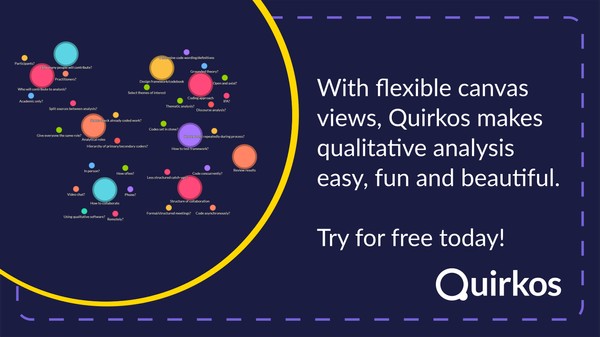Interviews are a cornerstone of qualitative research, frequently employed to gather in-depth insights. You’ll often encounter research papers stating something along the lines of, “We conducted n in-depth, semi-structured interviews with key informants.” But what does “in-depth” truly entail? What qualifies as sufficiently detailed? And how structured are these semi-structured interviews, really? This guide provides a comprehensive overview of How To Write An Interview Guide For Research.
Understanding In-Depth Qualitative Interviews
The term “in-depth” in qualitative research typically signifies a one-on-one interview focused on a specific topic, explored in significant detail. These qualitative interviews commonly span around an hour, though they can extend much longer. While resembling a natural conversation, key differences lie in the power dynamics and the ultimate goal: to gather rich, qualitative data. As sociologist Burgess (2002) aptly puts it, these are “conversations with a purpose.”
Qualitative Interviews vs. Quantitative Surveys
Qualitative interviews diverge from quantitative surveys by seeking detailed and nuanced responses. They acknowledge that a “one-size-fits-all” approach is often unsuitable, especially when eliciting personal narratives. Unlike rigid research protocols with standardized questions, qualitative interviews embrace flexibility. MacNamara (2009) emphasizes the need to ensure that the same general areas of information are collected from each interviewee, providing focus while allowing adaptability.
Types of Qualitative Interviews
Turner (2010) identifies three primary types of qualitative interviews:
- Informal Conversation (Unstructured): A free-flowing, conversational approach.
- General Interview Guide (Semi-structured): Utilizing a guide with predetermined topics and questions, but allowing flexibility.
- Standardized Open-Ended (Structured): Following a fixed set of open-ended questions.
This guide focuses on the semi-structured approach, striking a balance between structure and flexibility.
The Qualitative Interview Guide: Your Roadmap
An interview guide serves as a cheat sheet for the interviewer, containing a list of questions and topics to be covered. These aren’t meant to be read verbatim, but rather as reminders and prompts. Silverman (2013) highlights that departures from the guide are not only acceptable but often encouraged. This allows the interviewer to delve into unexpected yet relevant areas or skip sections irrelevant to the participant.
 Researcher uses the flexible canvas views of Quirkos qualitative analysis software to analyze the data.
Researcher uses the flexible canvas views of Quirkos qualitative analysis software to analyze the data.
Illustrative Semi-Structured Interview Guides
Actual examples of interview guides are unfortunately scarce in published research. They generally consist of a list of concise questions and follow-up prompts, categorized by topic, typically numbering around a dozen.
Example Question Set
Consider these example interview questions derived from the Qualitative Researcher Journeys project, an open-source dataset based on real interviews with qualitative researchers:
- What kind of researcher are you?
- How has that changed since you started your career?
- What was your first piece of qualitative research about?
- What did you learn from doing that?
- What’s your favorite methodological approach?
- Have you ever taught qualitative research?
- Do you teach qualitative research now?
- To whom did/do you teach qualitative research?
- Which aspects did/do you teach?
- What did/do you most enjoy about it?
- What did/do you find challenging?
- What do students most enjoy when learning?
- What do they find challenging?
- Do you have any funny stories that you like to tell others? Why that story?
- What (if any) cautionary tales do you use?
- Are there any experiences that you avoid sharing with students? Why is that?
- If you do not teach Qualitative Research, why is that?
- Is qualitative research a common paradigm in your department?
- What’s that like for you as a researcher?
- As a teacher?
- How have things changed since you first started researching?
- How have you changed since you first started?
- What do you do differently now?
- Are there any things that you find easier than others?
- Which part of the research process is your favorite?
- If you were give your younger self a piece of advice what would that be?
- Anything else you want to say or have heard through this piece of work
Nine Essential Tips for Crafting Effective Interview Guides
Based on extensive experience, here are nine crucial tips for writing a semi-structured interview guide:
-
Craft Open-Ended, Relevant, and Respondent-Centric Questions: Ensure your questions are open-ended, address your research questions, and are phrased with your respondents in mind. Avoid jargon and leading questions.
-
Align Questions with Your Analytical Approach: Structure questions that facilitate your chosen method of analysis. For narrative analysis, encourage storytelling. For Interpretative Phenomenological Analysis, focus on interpretations of experiences.
-
Utilize Optional Follow-Up Questions and Prompt Words: Include prompts to encourage deeper exploration of specific issues or conditions. For instance, “When did you first visit the doctor?” might be accompanied by prompts like “Why then?”, “Were you afraid?”, or “Did anyone go with you?”.
-
Maintain Flexibility in Question Order: Group your guide into topics, but be prepared to adjust the order based on the conversation flow. Listen actively to the interviewee and connect their responses to other relevant topics.
-
Master Your Interview Guide: Know the content of your guide thoroughly, allowing you to ask questions in varying sequences and maintain a natural conversational flow.
-
Strive for Natural Conversation: Encourage relaxed, non-combative discussions. Make the first question easy to ease the participant into the interview. Engage like a normal human being, but avoid sharing leading opinions or making the discussion about yourself. Legard, Keegan, and Ward (2003) emphasizes the importance of this natural approach.
-
Collaborate with Your Research Team: Seek feedback and suggestions from peers and supervisors. Prepare the guide well in advance to allow for discussion and revisions. Seasoned interviewers can provide valuable insights.
-
Adapt and Document Changes: Revise your interview guide as you collect data, especially if new insights emerge. Maintain records of all versions and which respondents were interviewed with each version.
-
Time Your Questions and Prioritize: Estimate how long each question will take to ask and answer. Have “lower priority” questions that can be dropped if time runs short.
Conclusion: Mastering the Art of the Interview Guide
By following these guidelines, you can create a valuable tool to shape your semi-structured interviews. Remember that practice is crucial. Avoid over-reliance on the guide, and prioritize flexibility. While challenging, mastering this process will yield rich, insightful research data that you’ll be excited to analyze.
Don’t forget to explore the references linked throughout this guide, as well as the wealth of excellent resources available on qualitative interviews. Also, consider exploring innovative qualitative software such as Quirkos. We also have a rapidly growing series of blog post articles on qualitative interviews. These now include 10 tips for qualitative interviewing, transcribing qualitative interviews and focus groups, and how to make sure you get good recordings.
